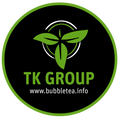America is a coffee country—does bubble tea stand a chance?
A nation's new drink craze... (Fanqiao Wang)
Meeting up at a coffee shop is a cornerstone of modern American life. Business meetings, book clubs, and first dates all pair well with a coffee. But some fast-growing Taiwanese chains and American entrepreneurs are hoping you’ll switch allegiances to a younger rival: bubble tea.
Invented in Taiwan in the 1980s, the hugely popular drink involves milk tea (usually iced) mixed with fillings such as tapioca pearls or grass jelly, all sipped through a fat straw. Variously known as bubble tea, boba tea, or pearl milk tea, the words “bubble” and “boba” are (perhaps surprisingly) completely unrelated: “bubble” refers to the milk froth that occurs after shaking the cup, while “boba” comes from a Taiwanese slang term for the distinctive tapioca balls.
The big players in the bubble tea market already have huge presences internationally. ChaTime has over 1,000 stores worldwide and is publicly listed (via parent company La Kaffa) on the Taiwanese stock exchange with a market cap of $71.5 million; Quickly has more than 2,000 stores on four continents; Gong Cha has over 1,000 stores and adds well over one hundred each year; and CoCo Fresh is expanding into South Africa as well as Asia and North America.
But while each of these brands has a US presence, neither they nor their newer American rivals have yet to reach anything like Starbucks scale. The coffee behemoth has over 13,000 stores in the US alone, and an international market cap of $88.4 billion. Second place Dunkin’ Donuts (which, despite the name, is primarily a coffee chain) has over 8,000 US stores. And while traditional (non-bubble) tea chains have also been expanding in recent years, they too are far behind the coffee kings. Teavana, a tea bar and emporium owned by Starbucks, now has 311 US stores, while Chicago-based Argo Tea is up to 36.
Creating a successful food or drink chain has always been as much a question of organizational infrastructure as final product.
Overall, Americans each drink 8 fluid oz. of coffee per day, and only about one-third as much tea. Clearly, the US is still very much coffee country. Does bubble tea stand a chance? The answer will depend on two things: bureaucracies and actual beverages.
Secrets of scale
Creating a successful food or drink chain has always been as much a question of organizational infrastructure as final product. Coffee aficionados don’t generally cite Starbucks as their favorite brew; the secret of the chain’s success is a combination of consistency, convenience, and a focus on atmosphere.
In fact, the economist Luigi Zingales has written that the rise of information and communication technologies since the mid-1990s has vastly increased the advantages of massively scaled businesses relative to small- and medium-sized firms. The future, he says, belongs to companies with the internal culture and managerial know-how to scale effectively. The term “scaling” might be heard most commonly in Silicon Valley but it’s “not just the Apple of this world. It’s also the Starbucks,” as Zingales said in an interview with fellow economist Tyler Cowen. “The fact that the major chain of coffee is not Italian is really hurtful,” he joked, but it was Starbucks that figured out how to bring Italian-style coffee to scale.
Scaling an organization involves many challenges, but one of the secrets might surprise you: bureaucracy. While we tend to think of that word in purely negative terms, the management and political theorist James Q. Wilson defined the core of bureaucracy as simply making a procedure sufficiently rule-based that it can be executed consistently by far-flung employees. McDonald’s “bureaucratized” burger-making with a 600-page operations manual that carefully regulates every step of the process, enabling the company to open new stores at great speed, with consistent quality, across the world.
And this is exactly what the Taiwanese chains have done for bubble tea. A customer enters the store and gives her order to a smiling barista. There are clearly-defined options for levels of sugar and levels of ice. The barista repeats the order, which the customer can also view on a tablet screen by the register. The barista then prints off a label and sticks it onto a plastic cup, which she passes to a colleague who prepares the drink. A few minutes later the customer has her drink in hand, exactly as ordered.
We’re so used to this kind of bureaucratized production that often we don’t really think about it, but many dominant American firms attained their position by perfecting the bureaucratic process for their particular product.
For example, the Starbucks system famously involves writing the customer’s name on every cup and then checking boxes to express what goes inside. While this sometimes causes trouble for those of us with uncommon names, it allows Starbucks to achieve a level of speed and accuracy that most coffee shops don’t match.
Similarly, Chipotle’s big trick was to develop an assembly-line setup where customers walk along a counter where the meal is passed along and built up by multiple servers. This maximizes “burrito velocity,” and allows some restaurants to process “a ludicrous near-six transactions per minute.” In a nostalgic touch, the chain’s original Denver location still uses a more old-fashioned setup, where customers simply stand at counter and give their order to a single point-person employee. But if Chipotle hadn’t innovated on the bureaucracy of burrito-making, it may never have scaled far beyond that first venue.
Bubbling up
Bubble tea has a number of strengths in the battle against its more established rival. First, aficionados point to its refreshing versatility. “Sometimes it’s a pick-me-up like a smoothie and other times it’s a caffeine-fix drink like an ice coffee” Bin Chen and Andrew Chau, co-founders of the premium bubble tea company Boba Guys Inc with stores in San Francisco and New York, told Quartz. “It lights up your sense of smell and taste. And the tapioca pearls add a whole new dimension of mouthfeel. It’s like drinking with gummy bears.”
But perhaps the drink’s most divisive quality is the sensory experience of drinking it.
What’s more, “not everyone wants the caffeine spike from coffee,” say Chen and Chau. “The caffeine build in tea is much slower, so more people are getting into that.” There’s also wider range of choices—“there is more diversity in tea as each type and flavor is more pronounced”—giving customers the option to rotate their orders more often.
But perhaps the drink’s most divisive quality is the sensory experience of drinking it. Consumed through wide plastic straws designed to fit a tapioca pearl, roughly half an inch in diameter, the pearls often get stuck in the straw and then rush suddenly into the mouth once released. The texture of the pearls is soft but chewy, while other toppings such as pudding and grass jelly provide a silkier touch with little resistance. By chance or careful straw placement, the drinker can encounter a distinct series of sensory experiences from a single cup.
Tea totals
The sometimes skeptical reactions from first-time bubble tea drinkers raises the possibility that the drink will remain a niche trend, rather than a national sensation.
“We would describe our experience of introducing bubble tea to new people as ‘complex,’” say Chen and Chau, the bubble tea entrepreneurs. “It’s a bit like introducing American football to Europeans, or Star Trek to a Star Wars fan. The bones of each thing are the same, but it’s just so different when it’s all pieced together.” Ultimately, though, they feel confident that the gaps are bridgeable. “Our mission is to bridge cultures. If anything, milk tea is a European drink,” they argue, and while “tapioca pearls are a bit specific to Asian culture, we all know and love gummy bears.”
Most of the bubble tea chains have made their first moves in the San Francisco Bay area, where there are already hundreds of bubble tea stores. But the race to bring bubble tea to the whole of the US has already begun. Chatime has stores in Minneapolis, Boston, and Miami; Quickly has a store in D’Iberville, Mississippi and is coming soon to Alabama, North Carolina, and more. Each location will surely find some pre-existing bubble tea fans, and plenty of people eager to try something new. But, inevitably, achieving Starbucks scale nationally would require reaching millions of Americans who have no previous history with the drink, and are perfectly happy with their daily coffee.
That said, perhaps many of those people didn’t enjoy coffee at first taste—it’s a strange, bitter drink, after all, until it becomes a familiar comfort.
Ultimately, whether bubble tea catches on in the US will be a question of taste and trends, and those are always hard to predict. What’s clear is that the business model for scaling bubble tea has already been honed, which could make all the difference between a passing craze and a long-running phenomenon.
Bubble Tea: WWW.BUBBLETEA.INFO


